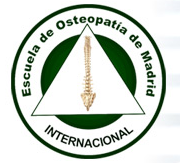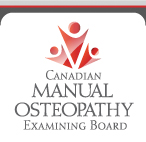Rosemary McShane, a German New Medicine® practitioner.
the German New Medicine® explains the true cause of heart disease
Heart disease is the number one genuine killer of adults in the Western world. The reason it is the number one killer is not actually because of the number of deaths; but because the most common first symptom of heart disease is death!
At the same time, many deaths from cancer and other "major" diseases are actually a result of the unsuccessful treatments for these diseases, and not a result of the diseases themselves.
So it's not that heart disease is a major killer. It's just more of a genuine killer than other diseases are. That's why it's worth understanding a few basic heart disease facts while we are still healthy.
Heart disease is poorly understood by conventional medicine. However, conventional medical practitioners believe that heart disease is well understood, when in fact only heart anatomy is well-understood, not heart disease.
So there is a considerable amount of preconceived - but incorrect - knowledge that has to be overcome before we can get our heart disease facts straight. To that end, this article will first present the conventional understanding, will then point out the error in the conventional understanding, and will finally explain the correct basis of heart disease; facts of biology paint a very different view of the reality of how the heart works.
Heart Disease Facts - Basic Anatomy of the Heart
In its simplest mechanical form, the heart is a double-pump machine that draws oxygen-depleted blood from the body and sends it to the lungs, then draws oxygenated blood from the lungs and sends it out to the body.
Blood is drawn into the right side of the heart through great, big veins called the vena cava. Then, with the controlling action of a couple of valves, blood is pushed out of the right side of the heart, through the pulmonary artery, to the lungs, where the blood releases carbon dioxide into the air we breathe out, and takes in fresh oxygen from the air we breathe in. Oxygenated blood is drawn into the left side of the heart through the pulmonary veins, and, controlled by a couple more valves, is then pumped out to the body through a big artery called the aorta.
Throughout the body, blood vessels that push oxygenated blood outward to organs and tissues are called arteries. Blood vessels that drain oxygen-depleted blood back toward the heart are called veins. Veins and arteries are kind of like little intestines: they have smooth musculature that helps the blood to move along by peristaltic action. Arteries are helped to push the blood along by the pumping action of the left side of the heart. Veins are helped to pull the blood along by the suction action of the right side of the heart.
Running around the walls inside each side of the heart, there are nerve impulse conductors that tell the two halves of the heart to beat in a coordinated rhythm.
The heart, like other organs of the body, is supplied with its own arteries and veins, to bring oxygenated blood and to drain oxygen-depleted blood. These veins and arteries wrap around the outside of the heart in such a way that they resemble a colourful blue and red crown. That's why they are called the coronary arteries and coronary veins: the word "corona" means "crown."
Heart Disease Facts - Conventional Medicine's Flawed Dogma
In modern conventional medicine, the anatomical details of the heart are clearly understood. However, conventional medicine has an extremely limited understanding of the brain, which coordinates the heart (not to mention every other part of the body).
The brain takes in information about the world around us and then directs the heart to do something differently, according to what is needed to handle the circumstances we are facing in our lives. The special actions of the heart, and, more often, the corrective symptoms of the heart system in the healing phase, are what we identify as "heart disease."
Because of conventional medicine's missing understanding - and because of not being aware that there is a missing understanding - the conventional summary of heart disease facts is based on a flawed hypothesis that has become a strict dogma: conventional explanations of heart disease have been limited to mechanical failures of the double-pump system and blockages in its supplying coronary arteries and veins. Thus, in conventional medicine, it is believed that heart disease arises from either breakdown of the mechanical action of the heart, blockages of the coronary arteries and veins, or breakdown of the electrical signatures that coordinate the pumping rhythm of the two sides of the heart.
This is incorrect. The heart system is not a machine like a car that breaks down when delicate parts "wear out" because of improper "maintenance." (In fact, man-made mechanical systems wouldn't break down nearly as often as they do except that they are built badly in order to create an industry around fixing them!) At no point in the billions of years of the history of Life did Nature create a crappy mechanical system!
The heart system responds to its instructions from the brain. The only "mechanical" problems that can experienced by the heart are physical injury, such as stabbing, poisoning, being burned (from radiation), or biochemical injury from serious malnutrition, especially very bad anemia. But this is not unique to the heart; all muscles and tissues of the body suffer when such things happen.
Heart Disease Facts - the German New Medicine® Understanding
German New Medicine® healers understand heart disease facts from the same perspective as all other diseases: the brain innervates every tissue and every function of the body. Heart disease, like every other symptom in the body, is a result of specific types of changes in innervation, directed by specific parts of the brain, responding to specific types of experiences in the person's life. The brain changes its innervation to the heart system in response to experiences we have in our lives.
Different types of experiences will have an effect on different parts or functions of the heart.
Heart Disease Facts - True Anatomy of the Heart
The right and left sides of the heart physically touch one another and share coordinated rhythms, but otherwise they are like two separate organs. They are also each run from separate parts of the brain.
Right Heart - One heart organ - the right heart - has the job of drawing blood from the veins of the body and pushing that blood to the lungs to release carbon dioxide and take in oxygen. The right heart muscle and the valves in the right heart are innervated from the right side of the cerebral medulla in the brain, and also from the right side of the motor cortex of the brain. The "electrical" system of the right side of the heart is innervated from a third part of the brain, on the right side of the cerebral cortex. Meanwhile, the old, original "tube" of the right heart - the vena cava and pulmonary artery - continues to be innervated from the right side of the pons of the brainstem. This "tube" is like an intestine, moving blood into the heart by peristaltic action.
Heart diseases associated with the right heart include:
- myocardial infarction
- heart colic due to "blood too thin"
- tachycardia (fast heart beat)
- tricuspid and pulmonary valve problems
Left Heart - The other heart organ - the left heart - draws oxygenated blood from the lungs and pushes that blood into the arteries of the body. The left heart muscle and the valves in the left heart are innervated from the left side of the cerebral medulla in the brain, and also from the left side of the motor cortex of the brain. The "electrical" system of the left side of the heart is innervated from a third part of the brain, on the left side of the cerebral cortex. The old, original "tube" of the left heart - the pulmonary vein and the aorta - continues to be innervated from the left side of the pons of the brainstem. This "tube" is like an intestine, moving blood out to the body by peristaltic action.
Heart diseases associated with the left heart include:
- myocardial infarction
- heart colic due to "blood too rich"
- bradycardia (slow heart beat)
- mitral and aortic valve problems
Heart Defects
Once upon a time in our evolutionary development, all our ancestors had for a heart were two tubes - one for blood going to the gills and one for blood coming from the gills. Fish still have hearts like this. Later in evolutionary history, our ancestors developed lungs to take oxygen from air instead of from water. The ancient tubes developed an overlaying musculature to help them pump the blood harder and farther and especially to help overcome gravity.
When the lungs and the corresponding heart muscles developed, the two heart tubes twisted around each other to make room. Our hearts are actually backwards in our chests!
Heart diseases associated with the structure of the heart include things like ventricular and atrial septal defects, the heart being backward in the chest, AV canals, and other birth defects.
Diseases of the Pericardium
The entire heart is wrapped in a layer of protective tissue called the pericardium. The pericardium is innervated from the cerebellum. Heart disease associated with the pericardium includes pericardial effusion, pericarditis, and pericardial stiffening.
Coronary Heart Disease
Surrounding the heart are veins and arteries in a crown shape. These provide the oxygenated blood supply, coming right from the aorta at the left heart, for the heart muscle. They also take away oxygen-depleted blood, via the right heart and the pulmonary artery, to the lungs for re-oxygenation.
The coronary veins and arteries are not really part of the heart; they are just the blood supply to the heart. Technically, diseases of the coronary veins and arteries are not really heart disease.
These veins and arteries are special tissue that is innervated from the cerebral cortex, specifically from the sexuality and territory part of the cerebral cortex. The coronary arteries are innervated from the right side of the cerebral cortex, and the coronary veins are innervated from the left side of the cerebral cortex. These two extremely important areas of the cerebral cortex govern the fast and slow heart rhythms, the sex drive, the timing of the menstrual cycle, and our sexual orientation.
Diseases associated with the coronary veins and arteries include:
- angina pectoris
- coronary artery infarction (coronary heart attack)
- lung embolism (which is really coronary vein infarction)
- depression (associated with coronary arteries)
- mania (associated with coronary veins)
- cervical cancer is always associated with coronary vein disease
- impotence and frigidity
Heart Disease Facts - Where Heart Disease Really Comes From
The different parts and functions of the heart evolved over time to respond to different types of experiences. Heart disease is always either the active phase or the healing phase response to the brain's perception of an unexpected situation.
But heart disease, including the formation of heart defects before we're born, is not the result of mechanical failures, clogging, etc. Heart disease, like all diseases, originates as a biological response to a specific type of life experience.
With German New Medicine®, you can apply the biological laws to determine first the cause of heart disease, and from there a potential resolution.








 3:04
3:04
 Daniel Enriquez de Guevara
Daniel Enriquez de Guevara




























.jpg)






















0 comentarios :
Publicar un comentario